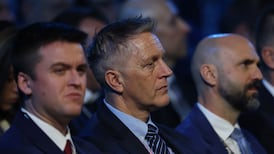Heading the ball in soccer has never been such a contentious issue with a legal case in the US threatening to change the way the game is coached and played, especially in younger age groups. In a class action lawsuit filed against Fifa and US Youth Soccer over concussions, players allege that outdated policies put millions, including children and teenagers, at risk.
More specifically the case, taken by a number of law firms in Seattle and San Francisco on behalf of players, says that repeated heading of the ball in children can have serious effects on their health.
Allegation
It's an allegation that the FAI's Medical Director, Dr Alan Byrne, believes has no scientific support but one that Attorney Steve W Berman, managing partner and co-founder of Seattle-based Hagens, Berman, Sobol, Shapiro LLP, along with Derek Howard and Jack Lee of San Francisco-based Minami Tamaki LLP, have taken on behalf of several current and former soccer players against soccer's governing body Fifa and affiliated soccer organisations in the United States.
The lawsuit alleges that these groups have failed to adopt effective policies to evaluate and manage concussions. They also claim that a lack of effective policies poses a greater danger to women and children players, who are more vulnerable to traumatic and long-lasting brain injury.
The case points to a number of issues in which it believes Fifa is negligent. It specifically singles out heading the ball and alleges it is a serious threat to the health of younger players.
“The negligence is remarkable, given that Fifa actively promotes its activities to children,” says Berman. He notes that the Fifa video game is the best-selling sports video game in the world and the second best-selling in the United States.
“Yet no rule limits headers in children’s soccer and children are often taught to head the ball from the age of three. We estimate that a dedicated youth player might sustain 1,000 headers per year, and a high-school player more than 1,800 headers.”
They also call for regulation of heading by players under 17 years old, and a rule change to permit substitution of players for medical evaluation purposes similar to the one rugby has implemented with their Pitch Side Concussion Assessment protocols.
“It would be hard to rule out the heading without some evidence or better evidence,” says Byrne. “We don’t have that at the moment. I am unaware of any scientific data that proves that.”
Rugby allows for a 10-minute pitch side evaluation of players suspected of having sustained concussion, while the US law suit argues that Fifa rules generally allow only three substitutions per game with no clear provision for head injuries. If an athlete bleeds, even from a scrape, removal is required, but no similar rule exists for concussions.
Side of safety
“Obviously we want to err on the side of safety,” adds Byrne. “When we see someone making a good defensive header or attacking header we want to encourage that in a safe way.
“It’s right to raise the awareness but I’m surprised Fifa have been targeted this way because they have been to the front of trying to raise the awareness and set down guidelines about concussions and player safety.”
The prosecuting firms also point to football's "George Smith" moment, which occurred in this summer's World Cup final.
Smith, an Australian player competing against the Lions in 2013 staggered out of the game after five minutes following a nasty collision with Lions’ hooker Richard Hibbard. Despite unable to support himself leaving the pitch the 32-year-old returned minutes later to continue playing.
In Rio concern over concussions mounted when several players returned to play after violent hits to the head.
In the final match, Germany's Christoph Kramer crashed into the shoulder of an opposing player and appeared to pass out. He returned to play, only to be assisted off the field 15 minutes later in a stupor.
Documented cases
“In the World Cup there were at least three well-documented cases where players were concussed,” says Byrne. “On one occasion the player didn’t agree with the doctor and went back on the pitch. We saw what happened in the World Cup final, Kramer I think.
“It’s extremely important for us in the FAI, extremely important for me as a doctor. Speak to anyone in this area and it really is about education of players, education of the referees, the parents, the teachers the doctors, the coaches and managers.”
The firm Hagens Berman has been at the forefront of groundbreaking class actions against the NCAA including concussion issues and players’ likenesses being used in videogames.
They also represents former NFL players in concussion-related litigation and several former college athletes in individual concussion cases against NCAA-member schools.
Minami Tamaki is a consumer and employee rights, immigration and nationality, personal injury, and corporate and business law firm based in the San Francisco Bay area in California.
The company is consistently recognized as one of the top law firms in the US.
Although Fifa reported over €1 billion in revenue in 2013 and the 2014 World Cup brought the governing body €920 million from US broadcasters alone, the lawsuit does not seek monetary damages to compensate for athletes’ injuries.
It does, however, point out that injured athletes could still pursue awards individually.

















